You may think that ticks die off with cold weather in the winter. A very cold winter means more ticks die off.
Many people still seem to have this notion but it’s not true. Ticks become dormant in the winter but don’t die off. Like most of nature, they are survivors and know how to do it very well.
During a tick’s 2-year life cycle, they go from an egg to a larva in their first year of life.  Late in their first year, before winter, they are molting into nymphs. In order to grow from larvae to nymphs they need their first blood meal. Most will make this transition inside a white-footed mouse’s nest where they have warmth and an available blood supply to complete their transition into the nymph stage. Birds may also make a suitable blood meal for them before seeking the warmth of the mouse’s nest for winter.
Late in their first year, before winter, they are molting into nymphs. In order to grow from larvae to nymphs they need their first blood meal. Most will make this transition inside a white-footed mouse’s nest where they have warmth and an available blood supply to complete their transition into the nymph stage. Birds may also make a suitable blood meal for them before seeking the warmth of the mouse’s nest for winter.
The following spring they will be fully developed nymphs and begin looking for their next blood meal. It is at this time of the tick’s life that they are most likely to transmit Lyme Disease. The time of year is usually May through mid-July in MA.
Their very small size and need for a blood meal will require both male and female ticks to get that meal anywhere they can. They are able to hitch along on a mouse or human and continue to search for that blood meal until they have enough to molt again into an adult. Nymphs will quest at this time by reaching out from grass and bushes hoping to attach to a warm-blooded mammal like your dog, coyote, fox, raccoon, their friend the white-footed mouse or you.
In many areas, the white-footed mouse population is 85-90% infected with the Lyme bacteria. Taking a blood meal from an infected mouse in their nest guarantees the larvae tick or nymph tick is also infected with the bacteria. Voles, squirrels and other rodents may also serve as meals and many carry the Lyme bacteria.
Scientists have been working on how to interrupt this cycle of the larvae becoming infected in the mouse’s nest and eliminating them at that point, before they become nymphs in their second year. One effective method to do this is with tick tubes. Each fall, mice look for nesting material to build or refresh their nests. They need soft, lofty material in order to stay warm during the winter. Ticks need a place to hide and stay warm as well and the thick material and mouse’s body heat make an ideal winter home for them.
Reduce ticks in your yard now with tick control tubes.
Tick tubes are designed to provide the nesting material for the mouse. The cotton  material contains an insecticide that rubs on the mouse’s fur as it moves around in the nest. This insecticide is not harmful to the mouse. However, when a nymph tries to attach to the mouse for their blood meal it is prevented by the insecticide on the mouse’s fur. The tick dies and the mouse is unharmed. The net result is you have fewer ticks to deal with in your yard next spring and summer.
material contains an insecticide that rubs on the mouse’s fur as it moves around in the nest. This insecticide is not harmful to the mouse. However, when a nymph tries to attach to the mouse for their blood meal it is prevented by the insecticide on the mouse’s fur. The tick dies and the mouse is unharmed. The net result is you have fewer ticks to deal with in your yard next spring and summer.
Using both a perimeter spray and tick tubes are a double whammy to your yard’s tick population. Ticks that survive the winter, or are brought onto your property by other animals like raccoons, coyotes, fox, opossum, etc., are eliminated by the perimeter spray. An EPA-approved professional tick control barrier spray will be 85-90% effective against ticks. Adding tick tubes to your tick prevention program drops the total number of ticks down even before the spray is even applied the following spring. In the end you, your family and your pets have a lower risk for tick-borne infections while enjoying your yard next summer.
Also read: Should I be worried about ticks at my suburban home?

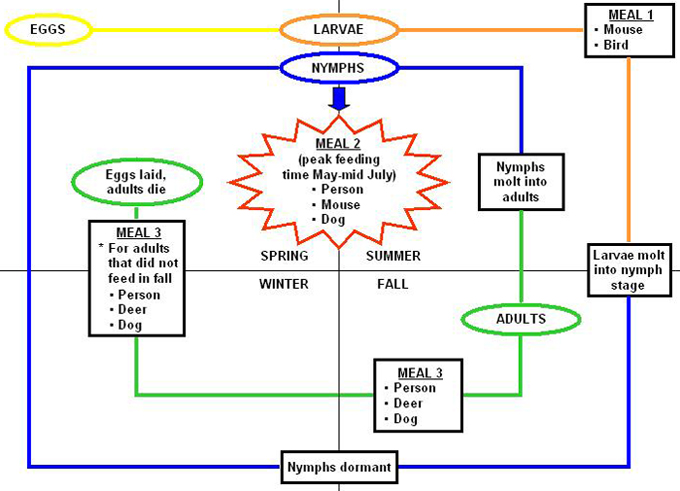
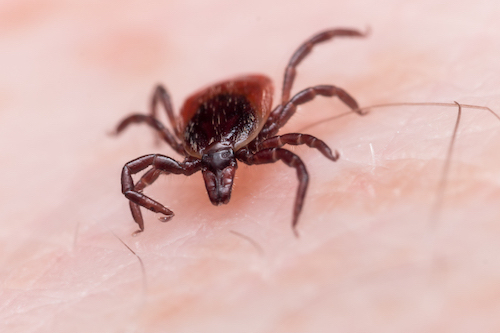
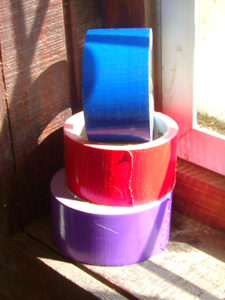 Where would repair people, mechanics and homeowners be without this 11th Wonder of the Fix-it World? Well, there’s yet another use for it when it comes to ticks. Before ticks become attached to your skin or your dog’s skin, tear off a piece of duct tape and “stick it to them”. Blotting up any ticks on the skin removes the tick and prevents them from becoming lost before you can throw them out. Use a big enough piece of tape to fold it over the tick after removing it and seal them inside. When you’re done, throw the tape in the trash. How easy is that?
Where would repair people, mechanics and homeowners be without this 11th Wonder of the Fix-it World? Well, there’s yet another use for it when it comes to ticks. Before ticks become attached to your skin or your dog’s skin, tear off a piece of duct tape and “stick it to them”. Blotting up any ticks on the skin removes the tick and prevents them from becoming lost before you can throw them out. Use a big enough piece of tape to fold it over the tick after removing it and seal them inside. When you’re done, throw the tape in the trash. How easy is that? It’s OK; this one isn’t as bad as it sounds. Since you have some privacy and your pants and lower garments are off it’s easy to spot any ticks on your skin. Ticks like to hang out for a free meal in grassy and brushy areas. They climb to a height anywhere from our ankles to knees. They dry out quickly in the heat and sun so they try to find shade ASAP. When they find you, that shade is under your clothes and not outside the fabric. Once they get near your skin, they begin looking for places where the skin is thin and where the biggest blood supply can be found. That is usually in the creases and folds of our skin, such as your waist and groin area.
It’s OK; this one isn’t as bad as it sounds. Since you have some privacy and your pants and lower garments are off it’s easy to spot any ticks on your skin. Ticks like to hang out for a free meal in grassy and brushy areas. They climb to a height anywhere from our ankles to knees. They dry out quickly in the heat and sun so they try to find shade ASAP. When they find you, that shade is under your clothes and not outside the fabric. Once they get near your skin, they begin looking for places where the skin is thin and where the biggest blood supply can be found. That is usually in the creases and folds of our skin, such as your waist and groin area.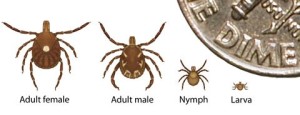
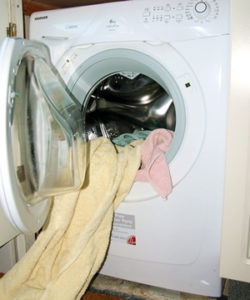 Hard ticks and soft ticks all need moisture, especially hard ticks like deer ticks. Other soft ticks take a bit longer to dry out. So tip #3 is to put the clothes you wore outside in the dryer as soon as you come indoors. Do this before washing them. Ten minutes on high heat will dry out hard ticks and 15+ minutes will dry out the softer ones. Washing won’t destroy ticks, no matter how hot the water. Remember, they need moisture and are active in warm months so warmth and water are their two best friends. Very dry and hot are their worst nightmare. Once your clothes are finished in the dryer, wash them knowing you won’t be releasing any ticks into your closets or clothes hamper.
Hard ticks and soft ticks all need moisture, especially hard ticks like deer ticks. Other soft ticks take a bit longer to dry out. So tip #3 is to put the clothes you wore outside in the dryer as soon as you come indoors. Do this before washing them. Ten minutes on high heat will dry out hard ticks and 15+ minutes will dry out the softer ones. Washing won’t destroy ticks, no matter how hot the water. Remember, they need moisture and are active in warm months so warmth and water are their two best friends. Very dry and hot are their worst nightmare. Once your clothes are finished in the dryer, wash them knowing you won’t be releasing any ticks into your closets or clothes hamper.